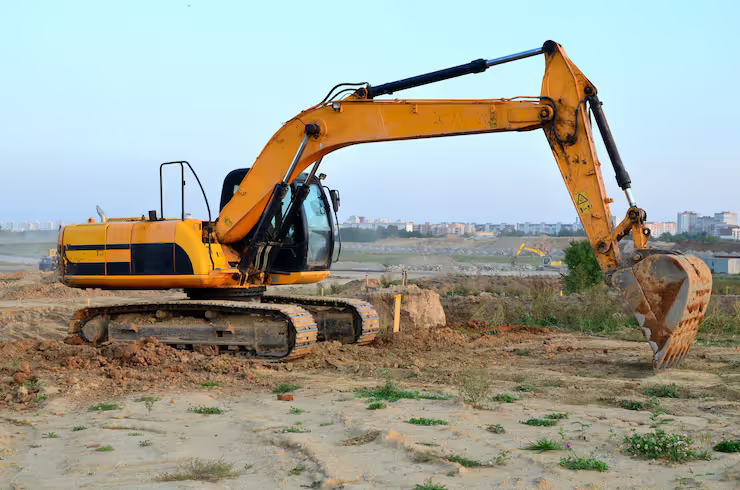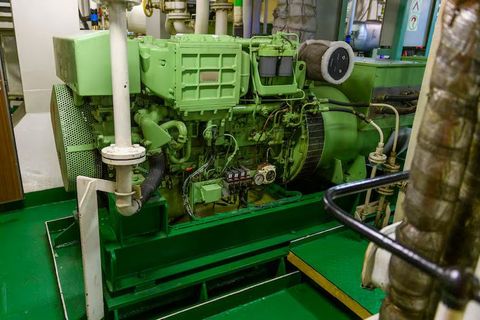Practical Suggestions for Maintaining Excavator Machines
Excavator machines are powerful pieces of heavy equipment used in construction, mining, agriculture, and infrastructure projects. Their primary role is to dig, lift, and move large quantities of soil, rock, and debris efficiently. Given their continuous heavy-duty usage, excavators undergo significant wear and tear, making regular maintenance essential.
The concept of excavator maintenance exists to ensure machine longevity, safety, and performance. Just like vehicles, these machines require routine checks—such as oil changes, hydraulic system inspections, and filter cleaning—to prevent costly breakdowns.

A well-maintained excavator not only performs better but also consumes less fuel, reduces emissions, and ensures operator safety on site. With the growing use of digital monitoring and smart maintenance tools, operators today have better ways to track machine health than ever before.
Importance
Maintenance of excavators matters across industries because it directly impacts productivity, safety, and operational costs. Construction firms, contractors, and heavy-equipment rental companies all benefit from preventive maintenance practices.
Key reasons why excavator maintenance is important include:
-
Minimized Downtime: Regular servicing helps detect issues before they cause major failures.
-
Extended Machine Life: Well-maintained equipment lasts longer, offering better return on investment.
-
Improved Safety: Preventing hydraulic leaks, brake failures, or worn-out tracks reduces accident risks.
-
Cost Efficiency: Preventive maintenance costs are significantly lower than emergency repairs.
-
Compliance with Regulations: Following manufacturer and government maintenance standards ensures legal and safety compliance.
In short, neglecting maintenance can lead to expensive repairs, reduced productivity, and even workplace hazards.
Recent Updates
Over the past year (2024–2025), several advancements have shaped the way excavator maintenance is managed globally. Manufacturers and construction companies are increasingly adopting smart technologies and sustainability initiatives to improve machine efficiency.
| Trend | Description |
|---|---|
| IoT-Based Predictive Maintenance | Modern excavators are now equipped with Internet of Things (IoT) sensors that monitor engine temperature, hydraulic pressure, and vibration patterns to predict failures before they occur. |
| Telematics Integration | Platforms like Caterpillar’s VisionLink and Komatsu’s KOMTRAX help fleet managers track machine health remotely. |
| Eco-Friendly Hydraulic Fluids | Companies are shifting to biodegradable fluids that reduce environmental impact. |
| Electric and Hybrid Excavators | New models introduced by Volvo and Hitachi feature electric systems that reduce maintenance frequency by up to 30%. |
| AI-Powered Maintenance Scheduling | Artificial intelligence tools analyze operational data to create optimal service schedules. |
These innovations not only streamline maintenance but also align with the industry’s focus on efficiency, sustainability, and cost control.
Laws or Policies
The maintenance of excavator machines is also governed by occupational safety, environmental, and equipment operation laws. Depending on the country, various policies ensure that machines meet performance and safety standards.
Common regulatory aspects include:
-
Occupational Safety and Health Administration (OSHA) Standards (U.S.) – Requires regular inspection and recordkeeping of heavy equipment to ensure operator safety.
-
EU Machinery Directive (2006/42/EC) – Mandates that excavators comply with European safety and maintenance standards.
-
Environmental Protection Regulations – Encourage proper disposal of hydraulic oils and use of emission-compliant engines.
-
National Construction Codes (e.g., Egypt’s Construction Equipment Regulations) – Define operator certification requirements and periodic inspection schedules.
-
Manufacturer Warranty Policies – Many manufacturers require routine maintenance logs to keep warranties valid.
Failure to follow these regulations can result in fines, project delays, or liability in case of workplace accidents.
Tools and Resources
Efficient excavator maintenance is now easier with the help of digital tools, mobile apps, and professional platforms designed to assist with inspection, scheduling, and cost tracking.
| Tool/Resource | Function | Example |
|---|---|---|
| Maintenance Tracking Apps | Log services, generate reports, and set reminders | Fleetio, UpKeep, MaintainX |
| Telematics Systems | Monitor fuel use, performance, and diagnostic alerts | Caterpillar VisionLink, Komatsu KOMTRAX |
| OEM Diagnostic Software | Troubleshoot system errors and calibrate sensors | John Deere Service Advisor, Hitachi Global e-Service |
| Parts Catalog & Ordering Tools | Access manuals and order components quickly | CNH Parts & Service, Doosan Smart Solutions |
| Cost Calculators | Estimate maintenance and operational expenses | Construction Equipment Cost Calculator (CECA) |
| Training Platforms | Operator certification and safety learning | OSHA Training, Coursera Heavy Equipment Courses |
These resources help ensure regular inspection, efficient resource use, and documentation for compliance or audit purposes.
FAQs
1. How often should excavator machines be serviced?
Typically, excavators should undergo minor inspections every 250 hours and comprehensive servicing every 1,000 hours of operation. However, the schedule depends on the brand, model, and work environment.
2. What are the most common maintenance tasks for excavators?
Key tasks include checking hydraulic fluid levels, replacing filters, inspecting undercarriage wear, cleaning air intakes, and tightening loose bolts.
3. How can I reduce the maintenance cost of my excavator?
Use high-quality lubricants, monitor machine performance through telematics, and train operators to use the equipment properly to prevent unnecessary wear.
4. What safety checks are necessary before operating an excavator?
Operators should inspect the boom, bucket, and hydraulic lines for leaks or cracks, test the brakes, and ensure all warning lights are functional.
5. Can digital maintenance tools replace physical inspections?
No. While digital tools assist with tracking and prediction, physical inspections remain essential for detecting structural or mechanical issues.
Example Maintenance Schedule Table
| Maintenance Task | Recommended Frequency | Purpose |
|---|---|---|
| Hydraulic Oil Change | Every 2,000 hours | Prevents internal wear |
| Air Filter Replacement | Every 500 hours | Improves engine efficiency |
| Track Tension Check | Every 250 hours | Ensures stability and mobility |
| Greasing Joints | Daily | Reduces friction and damage |
| Electrical Inspection | Every 1,000 hours | Detects wiring and sensor faults |
Following such a structured maintenance schedule ensures consistent performance and reduced repair downtime.
Final Thoughts
Excavator maintenance is a vital part of responsible equipment ownership. Beyond extending machine lifespan, it ensures operational safety and compliance with environmental and industrial regulations.
Modern maintenance practices are moving toward data-driven, predictive, and environmentally conscious approaches. Businesses that invest in preventive maintenance, digital tracking, and skilled operator training can significantly cut operational costs and avoid unexpected breakdowns.
In the long run, proper care and attention to excavator health lead to smoother operations, fewer repairs, and improved project efficiency.






